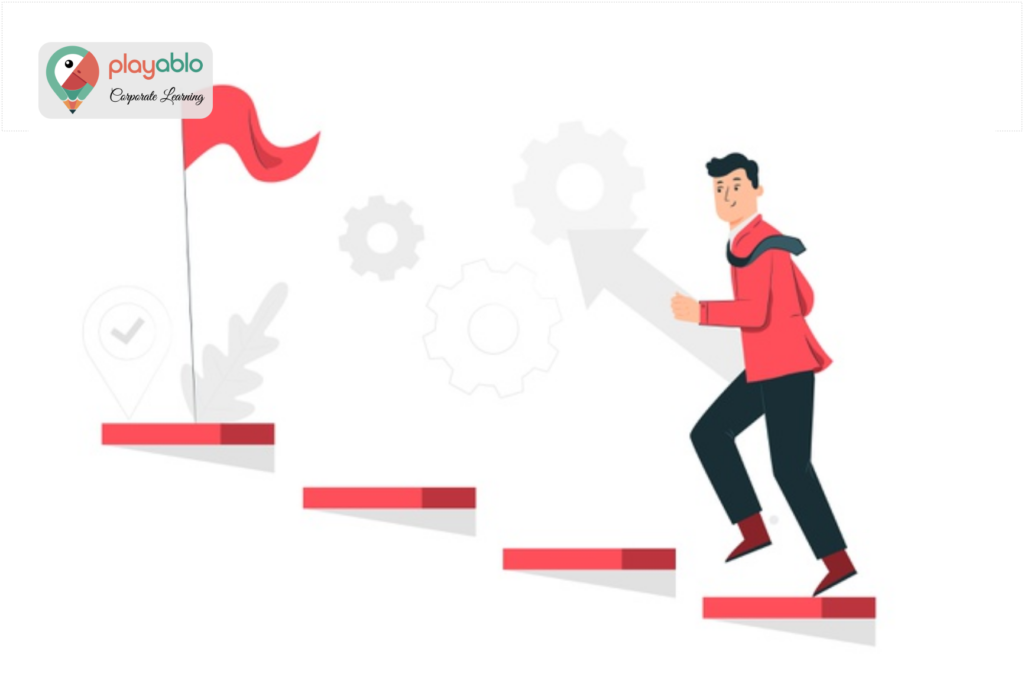Here’s a trick question! What key metric MUST you consider to measure the success of eLearning programs via LMS platforms? The most common answer we hear is ‘learning completion rate’. It is a KPI (Key Performance Indicator), no doubt. But it is not the only nor the most potent measurement. Why?
“Course completion is the number one metric being used, and by a wide margin. This is clearly the easiest metric to gather, but it doesn’t really tell an organization much. If 98% of learners complete a course, you still have no idea if it was effective, if they liked it, if they will remember it, or if it will help the business.“

Tracking and analyzing the key learning metrics for an LMS for corporate learning is vital to estimate the success of eLearning programs and your current learners, as well as, the future growth potential of your training program. In fact, a Learning Management System with robust analytics and reporting features helps you in pinpointing those bits of information that you need to focus on to increase your eLearning ROI.
Quantifiable estimates are vital to convincing your management to deploy the LMS pitched by you. It will also guide you in enhancing the overall design of your online training platform. You can additionally use the insights to create strategies to find out and improve the weaker aspects of your LMS.
The eLearning market is packed with different types of LMS platforms, offering different reporting features. Therefore, you need to know the KPIs that actually make a difference and render your training modules more effective, leading to the success of eLearning programs. Let us check out the THREE KPIs that you MUST consider while picking an LMS platform.
Table of Contents
3 Key Metrics Your LMS Should Report On to Measure the Success of eLearning Programs
Usage

Usage means time spent by learners on your platform. You should begin measuring the effectiveness of your platform and the success of eLearning by tracking if learners are spending enough time on your platform at all. And if they are, how many minutes or hours are they devoting to the training sessions. For instance, if trainees were spending around one hour of their time in week one and then, the number drops to 30 minutes in week two, this means that there is an issue. So, it’s time for you to break down and address the problem.
On the other hand, if there is a marked improvement in the hourly usage from week one to week two, this signals that your LMS development team has developed a course, which keeps learners engrossed and you have been able to achieve the success of eLearning.
However, these are not the only two inferences from the above metrics. An increase in time of usage may also mean that a certain module is difficult. You should then check out your LMS design at the microscopic level. Are the questions too complex? Should you rephrase some of them? Or maybe, you should delete that section of the course. Either way, the number of hours spent on your LMS platform gives you a better idea of how and when trainees are accessing the software.
Progress

The learner progress KPI is another metric to measure the success of eLearning. It helps you to determine how many of your learners have completed, partially completed, or not completed a specified course. This, in turn, helps organizations gauge the average time to complete a course.
For instance, if trainees are constantly unable to finish a program, this means that they are failing to grasp the information. If this is the case, you might need to rethink your strategy. You can get together with your team and evaluate the curriculum — do you need to modify it? Do you need to simplify some sections? Or do you need to make the course material more interesting?
This KPI for measuring the success of eLearning can also point toward some anomalies. For instance, if the completion rates showcase a sudden drop, this might mean that something has changed in your training format or the learning curve of trainees.
Perhaps the marketing department has deployed a new process, or your newly recruited manager is delivering a certain message differently. Maybe, a new technology’s know-how does not complement the information offered in the course.
Again, quick completion rates do not mean that everything is great! If learners are finishing a module at a quick pace, they might be in a hurry to get done with the course! Maybe, your session is not engaging enough. Or maybe, it is too easy. So it would be best if you thought of introducing more interactive elements and challenges.
The training completion rate is vital to estimate the ROI of your training program and the success of eLearning. When you know the exact number of trainees who have finished the course, their average completion time, and their average monthly salary, you can easily calculate the cost of training. Moreover, this metric supports compliance. For instance, for mandatory courses, the completion rate must be 100%.
Performance

We have all been in this place. We believe things are moving at a smooth pace until the final LMS reports make an appearance as a major roadblock. This is because we are so vested in designing the eLearning content that we miss out on measuring its effectiveness. This is where performance ratings come in while estimating the success of eLearning programs.
How do you do that? By incorporating assessment tests — in the form of quizzes or assignments. You can then measure learners’ performance and progress by keeping track of their scores. Only then, you will know how much of the targeted information has been grasped by your employees. This eventually allows you to measure the effectiveness of your eLearning program.
Ad: PlayAblo’s Enterprise-Grade Micro-Learning platform is built for millennial learners. Built-in assessments and gamification features ensure learning outcome measurement along with sustained engagement. Find out more and request a custom demo!
How Does PlayAblo Incorporate the 3 Vital KPIs?
When you use a platform like PlayAblo, you get a holistic view of the aforementioned metrics on your dashboard. The aggregate usage, progress, and performance view will look somewhat like this:
You get an aggregate estimate of the weekly hours spent on your LMS platform. You additionally get an overview of the learner completion rates — how many of your employees have completed the course? How many have not started a certain session yet? And how many are in the midst of a specific module?
Finally, PlayAblo gives the performance scores on an ongoing basis. You can check the progress of learners at any time. For example, if a certain batch consists of 35 learners, and they are on the 41st day of their training schedule, you can record their progress. What was their score before taking the course? How have they improved after completing the course? And what are their scores in the midst of a certain program?
PlayAblo additionally allows you to have a detailed breakdown of a specific module by offering two views:
- View by learners
- View by modules
You can even drill down the aggregate overview further to see individual learner information — for usage, progress, and performance. The detailed view looks somewhat like this:
And a detailed breakdown by individual modules will look somewhat like this. This will help facilitators understand the areas within a course that need attention
A Final Word
With an LMS in place, you can easily and continually evaluate the effectiveness of your training program and the success of eLearning by creating automated reports with the help of these KPIs. You can additionally use these metrics to evaluate training over the entire course duration or from one department to another. KPIs deliver meaningful and actionable data in a single platform, rendering your LMS highly efficient.
Ad: PlayAblo’s best-in-class visual dashboard provides you with actionable insights in real-time. The timely insights ensure learning outcome measurement along with sustained engagement. Find out more and request a custom demo!







Fantastic blog! Do you have any helpful hints for aspiring writers? I’m planning to start my own website soon but I’m a little lost on everything. Would you recommend starting with a free platform like WordPress or go for a paid option? There are so many options out there that I’m totally overwhelmed .. Any suggestions? Many thanks!
I like this blog so much, saved to my bookmarks .
Some really superb info , Sword lily I found this.
I抳e read several good stuff here. Certainly worth bookmarking for revisiting. I wonder how much effort you put to create such a fantastic informative web site.
Do you mind if I quote a couple of your articles as long as I provide credit and sources back to your webpage? My website is in the exact same area of interest as yours and my visitors would genuinely benefit from some of the information you provide here. Please let me know if this ok with you. Many thanks!
Yes, please feel free!